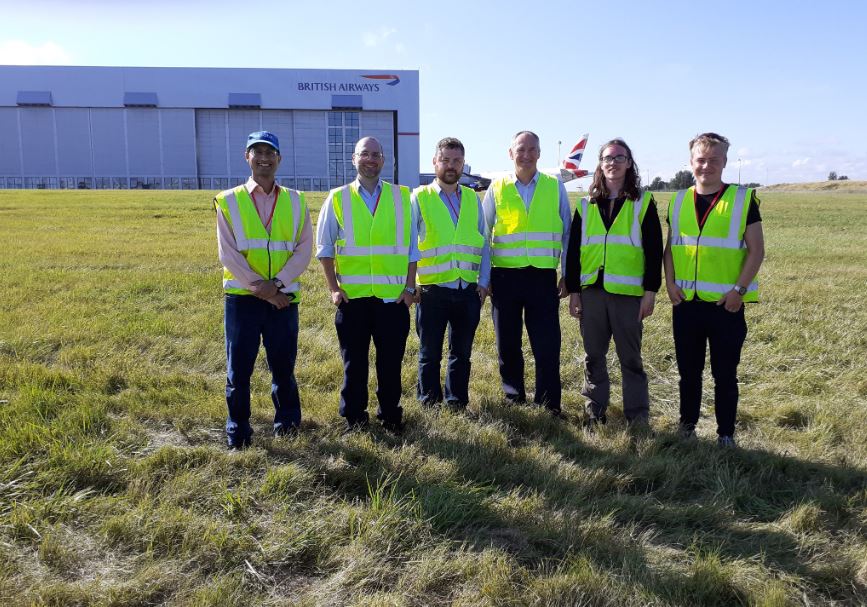- As part of the UK-Government funded UK Research and Innovation (UKRI) Future Flight programme, UK SMEs Flare Bright and Zenotech publish the results of a groundbreaking wind measurement project at the International Council of the Aeronautical Sciences (ICAS) annual meeting.
- Demonstrating that wind models can be validated by real-world wind measuring up to heights of 70 metres shows a way of creating accurate and validated wind maps in urban environments, which will be a critical enabler for future drone operations.
- The world-first project will continue into a third phase after being selected for a share of £73 million in further UK Government funding.
UK SMEs Flare Bright and Zenotech have produced groundbreaking wind measurement results which will be presented today [6 September 2022] at the prestigious 33rd Congress of the International Council of the Aeronautical Sciences (ICAS) in Stockholm. ICAS is the premier stage to bring together a global array of topics and participants as the only true international forum that covers the world of aeronautics.
Wind modelling of urban, airport and industrial sites is a crucial element in the new landscape of UAV operation and data systems. Accurate validation of highly localised wind models are critical to their adoption, as are the wind measurement tools necessary to validate such models. UK SMEs Flare Bright and Zenotech are publishing a comparison between Computational Fluid Dynamic (CFD) model results, static anemometer data and live flight trials of the SnapShot wind measurement nano-glider close to large buildings at Cardiff International Airport.
The results indicate striking correlation between the CFD results and the experimental flight test data, demonstrating a route to accurate validation of localised flow models to aid future UAV operation, as the airport buildings mirror the type of environments in urban areas. This will also be invaluable to other areas where only sparse wind data is available, such as landing on ships and platforms, and for new Vertiports for air taxis.

The SnapShot nanodrone developed by Flare Bright accurately measures wind vectors at exceptionally high update rates and high fidelity. SnapShot can reach areas where anemometers cannot and is significantly cheaper and provides more accurate data than LIDAR. This complements and validates Zenotech’s CFD-models and its AIRSIGHT service – an integrated online service delivering large airspace model datasets on-demand
Live flight trials using SnapShot at Cardiff Airport were used to validate the aerodynamic data service, including the detection and quantification of detailed aerodynamic features such as vortices in addition to other features like airflow around the buildings, using the SnapShot flight controller as a mobile anemometer.
The world-first results come off the back of SafeZone, an 18-month Future Flight Challenge project funded by UK Research and Innovation (UKRI). Following its success in phase two the project has received a third round of funding to enable the delivery of a new live data service to provide real-time information about aerodynamic hazards in urbanised environments.
Flare Bright’s Engineering Manager and Aerodynamics Specialist, Carl Sequeira will be publishing the results as an academic paper, with detail of the data collected and analysis of the results presented at the ICAS conference in Stockholm this week. He will be presenting alongside members of the Zenotech team.
Carl Sequeira says, “The results we saw were simply stunning – to see the tiniest wind features and vortices in SnapShot’s wind measurement drone match what Zenotech predicted is incredibly exciting. Given how critical the knowledge of safe wind limits is to drone flight, I believe this technology will open up entirely new markets and enable drones to fly safely in the tricky and variable winds that exist in urban environments. I’m really proud to have been part of this unique project.”
Cranfield University, Flare Bright and Zenotech are all ARPAS-UK members.
6 September 2022

